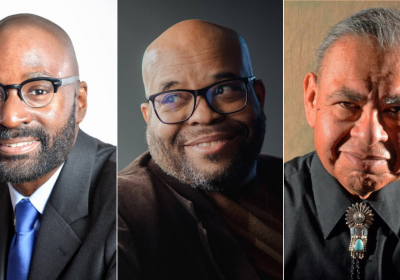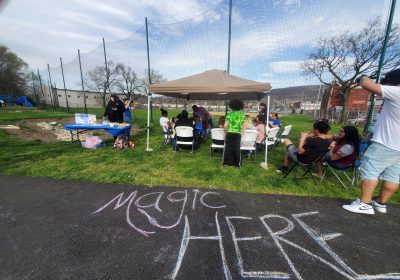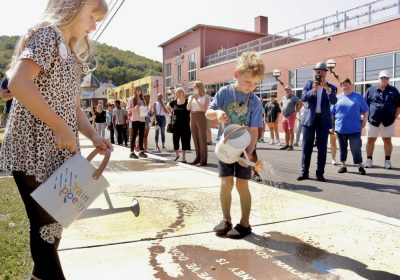By Karen Price
Springtime brings the emergence of new life, but the creatures that sprung from within the walls of the YMCA in Pittsburgh’s Homewood neighborhood this year weren’t like any this world has ever seen.
One was like a bird, but friendly as a dog with six legs on each side for walking. Another was a “humanoid type” character with multicolored fur-covered skin, three eyes, six legs and rounded ears. Then there was a round purple-and-pink monster with long, curly fur, two long legs, one singular eye and floppy ears.
Cryptids exist in folklore and legends across cultures worldwide, and this spring the teenagers at the YMCA Lighthouse program created their own cryptids – creatures such as Bigfoot or the Jersey Devil, that are rumored but never proven to exist – to “roam” the streets of Homewood. They furthered their exploration and creation of the creatures and their role in the community by writing haiku poetry about them in partnership with PA Humanities and the Rain Poetry project.
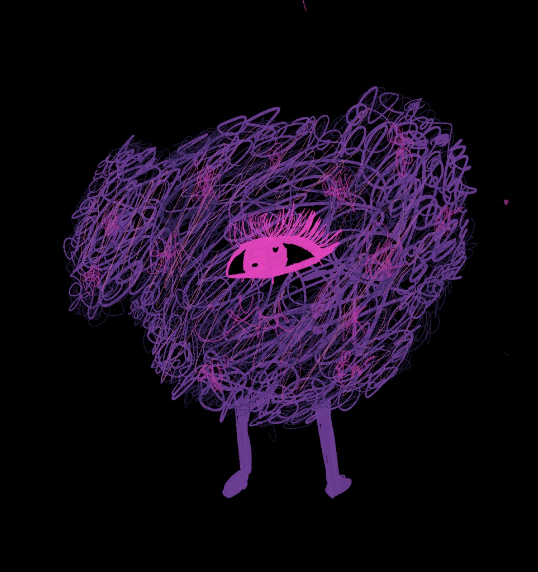
“I liked the idea of taking the art form and using it to talk about something both mystical and something related to the community,” YMCA Lighthouse director Ahmed “K” Bey said. “We’d planned on doing the cryptid project but we hadn’t planned on doing poetry (before the partnership with PA Humanities).”
The YMCA Lighthouse program serves teenagers and offers after-school clubs focusing on audio and visual arts. They’d done world-building projects in recent years, including super heroes and magic systems, Bey said. This year, the creatures themselves were the center of the project.
The students were experienced in writing haiku poetry, having incorporated it into projects in previous years. But Bey welcomed the opportunity to invite Rain Poetry teaching artist Karen Howard into the space and have the teens take a deeper dive into more advanced elements of poetry and language, such as metaphor and writing from a different perspective.
As part of the cryptid design, the students drew what their creatures looked like, animated them, created and recorded what they sounded like, and wrote about their origins, powers and temperaments before delving into poetry based on the hidden spaces and secrets of Homewood.
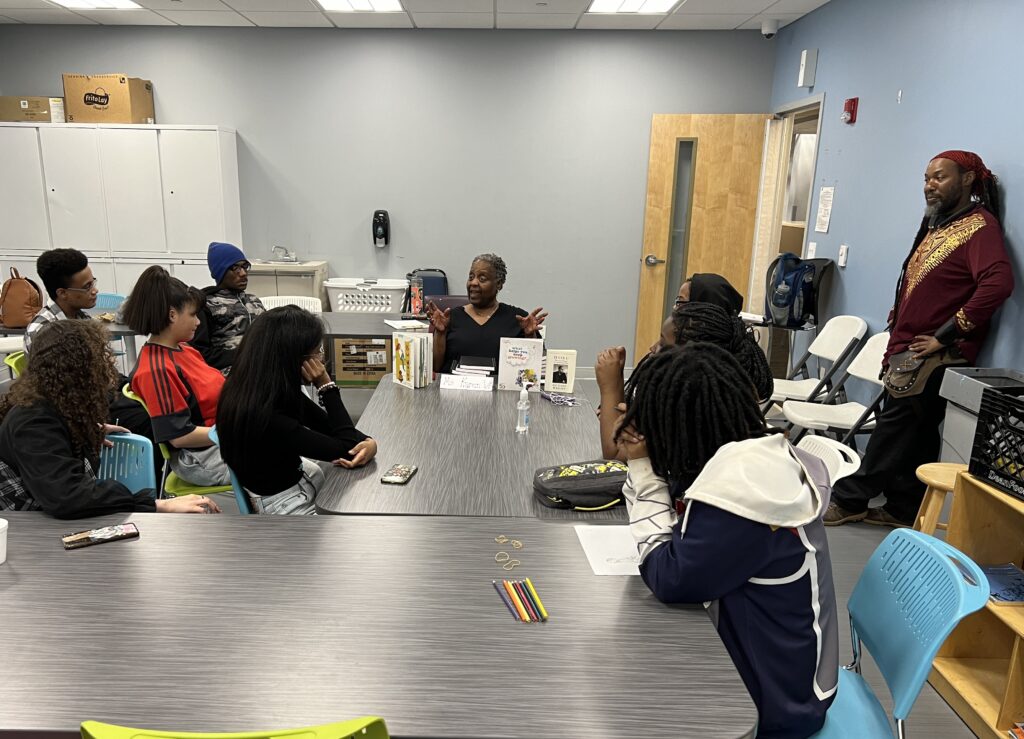
“It was this combination of world-building and process of thinking or and creating character to adapt to problems or situations,” Bey said.
Azadiel Watts, a teaching artist at YMCA Lighthouse who assisted with Rain Poetry but also built the unit on cryptids, said that rooting the students’ cryptids in Homewood strengthened community ties.
“These stories infuse everyday neighborhood experiences with a sense of mystery, addressing local issues and empowering youth to envision and advocate for change,” they said.
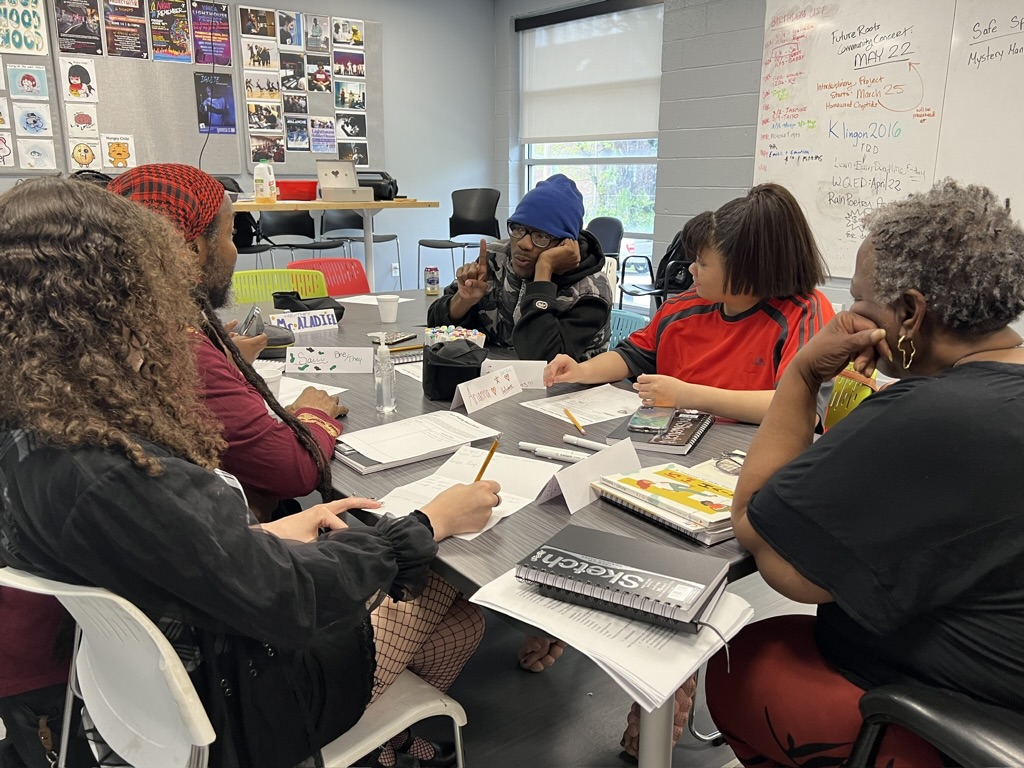
Howard expanded on the theme of hidden spaces and secrets of Homewood by leading students in a discussion of places in Homewood’s rich history that no longer exist.
They talked about the National Negro Opera Company house – a well-known safe place for Black athletes and performers such as Duke Ellington, Lena Horne and Joe Louis who were passing through Pittsburgh to gather and rest – as well as Silver Lake, a once picturesque lake that was filled in and paved over during the Great Depression. She then prompted students to think about how their cryptids might interact or experience visiting these places, and you can see these considerations reflected in their poetry.
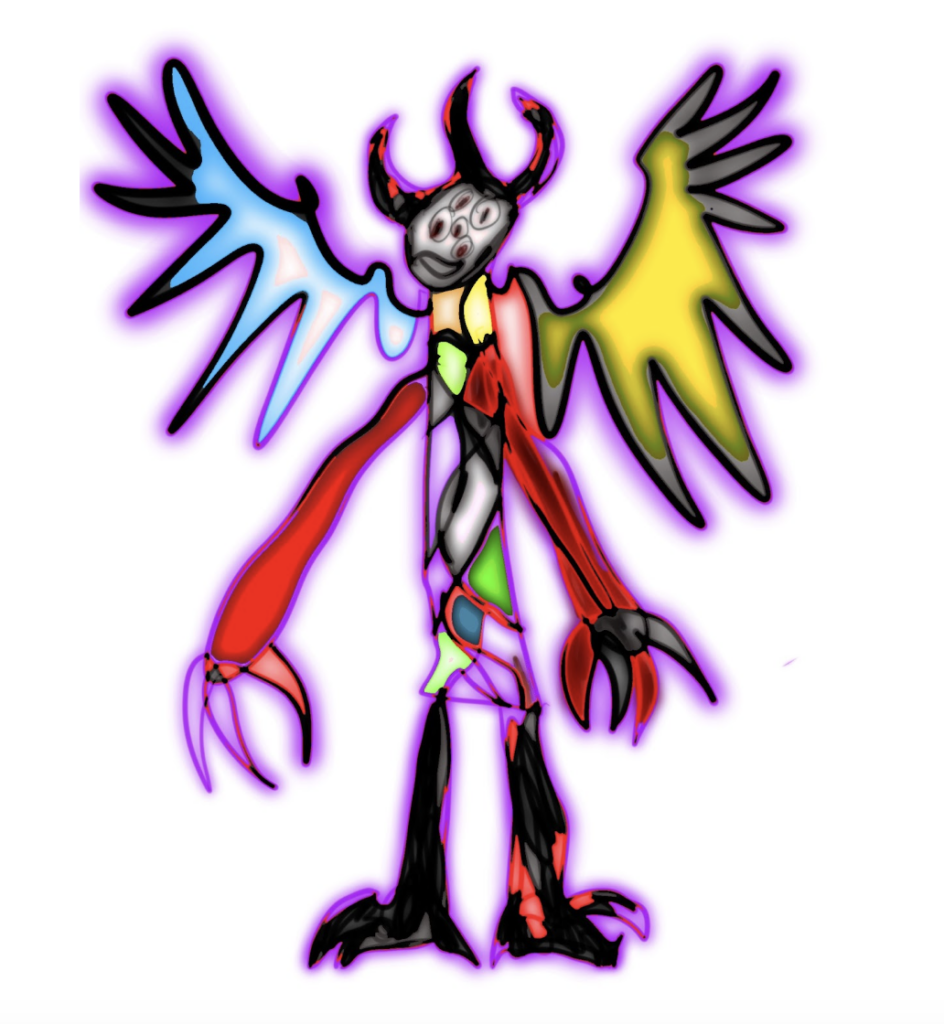
“What are your cryptids seeing in these safe spaces?” she asked the students during the workshop. “What happened to make them fill in Silver Lake? Think figuratively, not literally.”
Bey was also part of the Rain Poetry project at Northview Heights, assisting Howard with one of two workshops at that location. He enjoyed witnessing her approach to teaching the project, he said, and she introduced him to some new processes that he plans to integrate into activities they do at YMCA Lighthouse.
“And personally, I really enjoy co-teaching,” he said. “Without getting too philosophical, I have a strong resistance to what I call authority teaching, where the teacher is the sole authority and everyone else is below them. One of the ways to mitigate that is having more than one teacher. You bounce ideas off each other and it’s less of this supreme power and more of a collective conversation. One thing I really liked about (the Rain Poetry project) was this aspect of teachers who wouldn’t normally work together and bringing them together.”
After the workshop was complete, artists Max Gonzales and Shane Pilster installed the poems on the sidewalks surrounding the entrance to the YMCA. The big reveal was part of YMCA Lighthouse’s “Future Roots” end-of-year showcase of all their talented teens, including performances by musicians, rappers and spoken word artists.
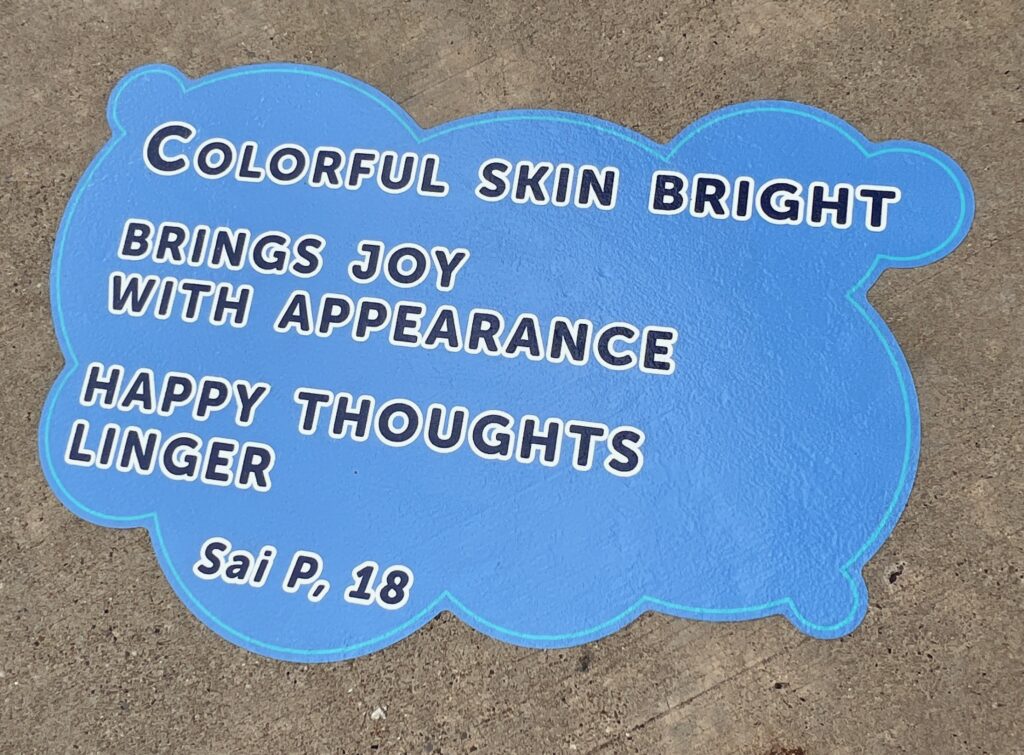
“(The reaction to the installation) has been huge,” Bey said. “Everyone who stops by asks me about them. And especially if I happen to be outside and someone asks, ‘What are these,’ I explain it and everyone loves the idea. And Shane and Max even took the time to talk to the students during the installation process and explained what they were doing. They weren’t just installers; they were part of the educational process.”
Since it wasn’t the students’ first time writing haiku poetry, Bey said, he enjoyed seeing the self-assurance they demonstrated in their ability to create.
“They were confident in their ability to write so much that they were kind of flexing and showing off,” he said. “I took pride in the fact that they felt so confident that they thought they were going to show off a little bit. That was kind of cool.”
Fluffy Like soft clouds
Marshmallow melting sweetly
The taste of happiness
Joy in being alone
Irreversibility
Happiness with friends
Waves bring joy today
Tomorrow swimming in lake
This brings joy in life
— Emarion G, age 15
A forest of life
The sounds of sirens calling
Silence in the dark
Roads of poison snakes
Sounds of roads cracking now
Gods of the past
The rainbow of things
The shallow of waters deep
Silence in the dark
— Arianna M-D, age 15
Softly lavender
Short temporal shapeshifting being
A helpful creature
Legless and slimy
Tall human in formalwear
Protecting nature
Adorable fairy
Humanoid mystery man
Beautifully sacred
— Jayden J,. age 16
Lavender and pink
Careful ears listen with joy
Fuzzy and purple
Not able to see
Iridescent and slimy
Able to shapeshift
Protective and earthy
And helpful tree shaped tunes
Healing harmonies
— Layla J., age 14
Hugs help with others
Its smiley attitude helps
It’s quite sensitive
An angry Creature
It’s pretty quiet and sharp
Takes clear human form
The beautiful voice
And the earth attitude
Comfort is the key
— Aryah M., age 16
My safe place is mine
My happy place is so great
The Y comforts me
My world is supreme
My room is very quiet
My world is peaceful
My world is safer
My safe place is in my room
Safer in the Y
— Emile G., 15
A creep of many
A monster a fiend even
Brings joy to faces
The room feels with joy
Odd faces never seen before
Skin of crayons
Colorful skin bright
Brings joy with appearance
Happy thoughts linger
— Sai P., age 18
Sweet and comforting
Sentimentalization
Full of tenderness
Mysteriousness
Never usually seen yet
Concealed in plain sight
Loving and quiet
Hidden beautifully placed
Full of homely spark
— Ziann W., age 16
A color so bright
Please show me the path of why
Happy is a fight
Living form of dark
Associated with hate
Brings kindness unmatched
A rainbow that’s yours
Consuming your lives of lore
Life is does give more
— Gabrielle C., age 16
Towering unknown
The joy of being alone
Fester, rekindle
Harmonious tunes
Helpful inspiring
Will protect us all
— Azadiel W., teaching artist, age 22
In the Pittsburgh region? The YMCA Homewood/Brushton branch is located at 7140 Bennett Street, but the installation is on the sidewalk along the back of the building. Park in the lot along Kelly Street and look for the rain drops to indicate the location of hidden poems!

Rain Poetry is made possible with the generous support of the Heinz Endowments, the Richard King Mellon Foundation and the Grable Foundation.
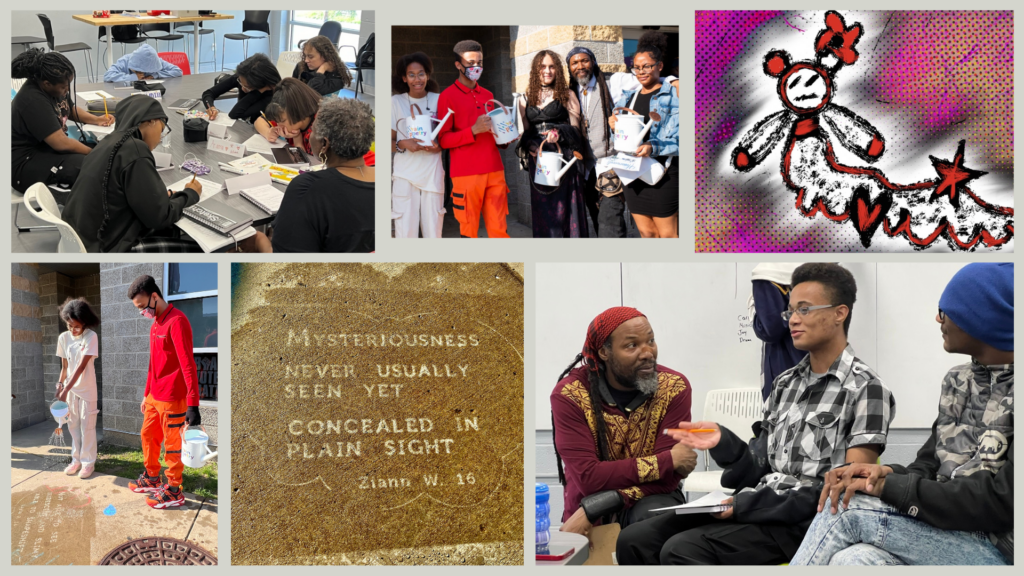
![[color – dark bg] PA SHARP FINAL FILES DB 72dpi [color - dark bg] PA SHARP FINAL FILES DB 72dpi](https://pahumanities.org/uploads/files/elementor/thumbs/color-dark-bg-PA-SHARP-FINAL-FILES-DB-72dpi-phgl7aimtfdpzt2rscvl43ksfv3asbbls19lsvuacw.jpg)
